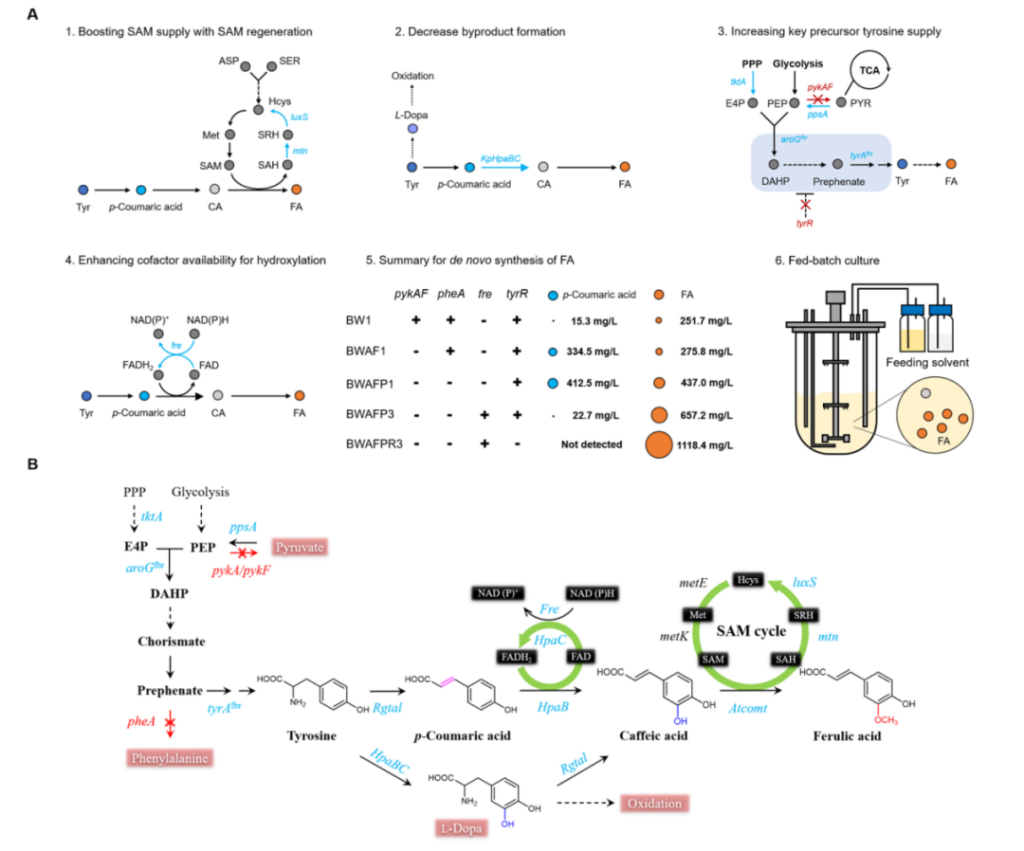Ferulic acid raw material has both whitening and anti-aging properties, with a market value of 1.82 billion yuan and a CAGR of 18.3% in 2028
1. What is ferulic acid
Ferulic acid a phenolic chemical substance found in various traditional Chinese medicines such as ferulic acid, Angelica sinensis, Chuanqiong, and Cimicifuga. It exists in very small amounts in free form, with a small portion forming a complex with lipophilic substances to form oryzanol. Most ferulic acid combines with lignin, polysaccharides, and proteins in cells to form the skeleton of the cell wall.
Ferulic acid applied in the field of cosmetics, which can effectively combat ultraviolet radiation, inhibit the activity of tyrosinase and melanocytes, and has effects such as anti wrinkle, anti-aging, antioxidant, and whitening.
2. The efficacy of ferulic acid
Whitening and rejuvenating the skin
Ferulic acid can stimulate the skin to produce highly active glutathione, helping to eliminate free radicals that cause skin dullness and aging, reducing the production of melanin in the skin and achieving skin whitening effects.
antioxidant
Ferulic acid recognized as a natural antioxidant that can absorb ultraviolet rays (in the wavelength range of 290-320nm),
thereby achieving sun protection and preventing skin damage from ultraviolet rays.
Anti inflammatory and soothing
Ferulic acid can reduce the phenomenon of anti darkening and darkening. In the repair stage after sun exposure and special beauty treatments, ferulic acid products preferred. They can effectively soothe and anti-inflammatory effects, allowing the skin to effectively repaired.
3. Precautions for ferulic acid
- Although ferulic acid a natural ingredient, it should also used in moderation and avoid excessive use to avoid causing skin discomfort.
- Due to the enhanced protective effect of ferulic acid on UV rays in skincare products, recommended to use it with sunscreen during the day to improve the skin’s protective ability.
- Before use, recommended to undergo a skin type test to ensure that it does not cause discomfort or allergic reactions. Although ferulic acid often considered a mild antioxidant, caution is still necessary for sensitive skin.
- Ferulic acid has a highly conjugated system and is a good light stabilizer when the concentration is 7%, widely used in sunscreen products;
Ferulic acid can used in face cream, lotion, essence, facial mask and other cosmetics.
Specification: 99% ferulic acid Recommended dosage: 0.1-1.0%
4. Regulatory situation of ferulic acid
- The Announcement on the Catalogue of Names of Used Cosmetic Raw Materials issued by the State Food and Drug Administration in 2014, as well as the 2010 edition of the Chinese Name Catalogue of International Cosmetic Raw Materials Standards issued by the China Flavor Association, both use ferulic acid as a cosmetic raw material, and there have been no reports of its unsafe external use;
- The American Cosmetic Association (CTFA) and the European Union also use ferulic acid as a cosmetic ingredient;
- Japan has also added ferulic acid as a sunscreen to cosmetics.
5. Market size of ferulic acid
According to Huajing data, the global market sales of ferulic acid reached 80 million US dollars in 2021,
and expected to reach 260 million US dollars (approximately 1.82 billion) in 2028, with a compound annual growth rate (CAGR) of 18.3%.
According to GIR (Global Info Research) research, based on revenue,
global ferulic acid revenue was approximately 68 million US dollars in 2021, and expected to reach 91 million US dollars by 2028.
6. Main manufacturers of ferulic acid
The main global manufacturers of ferulic acid include Delikang, Healthful International, Liaoning Fengzhijin Agricultural Technology Co., Ltd. The top five global manufacturers hold over 70% of the market share.
Currently, Europe is the world’s largest market for ferulic acid, with approximately 65% of the market share,
followed by the Chinese and North American markets, both of which hold over 25% of the market share.
7. Biosynthesis of ferulic acid
Recently, Metabolic Engineering published online the research findings of Professor Yuan Qipeng’s research group at Beijing University of Chemical Technology,
Targeting cofactors regeneration in metabolism and hydrogenation for high level production of Ferulic acid.
The study aimed to optimize the continuous supply and circular regeneration of SAM,
screen for HpaBC with low tyrosine hydroxylase activity, and fuse the expression of Escherichia coli endogenous flavin reductase through strategies such as optimization of SAM supply and regeneration, screening for HpaBC with low tyrosine hydroxylase activity,
and fusion expression, Greatly improved the efficiency of methylation and hydroxylation,
and successfully achieved efficient biosynthesis of ferulic acid in Escherichia coli.

In the end, under the joint action of the above strategies, the de novo synthesis yield of ferulic acid in the shaking bottle reached (1.12 ± 0.02) – g/L,
and the batch fermentation yield with supplementary materials was 5.09- g/L, which is currently the highest reported yield.
